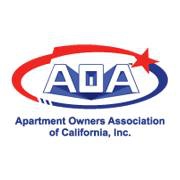
We can agree that time eats away at all things. However, when it comes to real estate and especially rental properties, it’s important to differentiate normal wear and tear from damage. Both landlords and tenants need to know their rights and obligations, as well as what needs to be done when damage occurs. In this article, we will help you find out if something is wear and tear or damage, and things to consider when trying to tell the difference.
What can be categorized as normal wear and tear or damage?
Let’s start by taking a closer look at what normal wear and tear means for tenants. If you are staying in a single property for an extended period of time, it is perfectly normal to expect some wear on the home and its amenities. If something happens to the property that does not fall into normal wear and tear, the landlord is entitled to charge you for it or deduct it from your security deposit.
Normal wear and tear is the inevitable and expected deterioration of the property that occurs over time. This can happen even with careful use, as things regularly break down, or it could be simply due to the passage of time. Landlords cannot hold tenants responsible for these changes to the property, as they did not occur due to any misuse or neglect. Instead, landlords need to cover the cost of the repairs and should plan out these expenses in advance.
There is also prolonged wear and tear – which happens when deterioration from everyday use is left untreated. Tenants need to report any issues before they escalate, or landlords could end up charging them for damage and repairs.
On the other hand, damage to the property does not naturally happen. It is the product of neglect, misuse, excessive force, or perhaps even an accident.
Caption: Even accidents and scratches from pets fall into the category of damage.
Alt-tag: Cat scratching an outdoor wooden wall.
The importance of an inspection
Home inspections are an important measure that can protect the tenant from being charged for damage that they didn’t cause. When moving into a new rental property, we highly recommend that tenants take pictures of its current state. When moving out, these can be used to show if the home sustained wear and tear or damage. During the initial home inspection, tenants should immediately point out any issues to the landlord. We would advise landlords and property managers to be especially careful to avoid common move-out mistakes. Stick to the inspection checklist, and go over everything thoroughly.
How property owners should budget the cost of repairs
Landlords need to have realistic expectations that their property won’t be in pristine condition forever. Whether we are talking about wear and tear or damage, consider the expected longevity of amenities and costs of repair. Landlords can consult with property managers on the expected lifetime of different areas of a property. We recommend making a checklist of standard repairs and their associated costs. This will significantly help with projecting the budget needed to maintain the property.
Caption: Serious damage to the property will be hard to hide.
Alt-tag: Hole in white wooden interior wall.
Where does most wear and tear or damage occur?
The kitchen
This is probably the area which suffers the most damage and wears, and also the most important one to remodel. The kitchen is one of the trickiest rooms to keep in good condition. Owners might need to consider remodeling if the kitchen is in bad shape, since a poorly maintained cooking space can turn away potential tenants. Damage mostly comes from food preparation and constant water use. Grease and food leftovers can also leave nasty buildups. Luckily, most of the damage will be on the countertops, which aren’t too hard to replace. Wear and tear in the kitchen also commonly comes from utensils and cutlery.
The bathroom
When it comes to water damage, no other room in your home is going to have the bathroom beat on that front. The tile joints will suffer the most wear over time, and if they aren’t regularly maintained will need to be replaced sooner rather than later.
The flooring
Scratch marks and fading from sunlight are common and pretty much unpreventable. No matter how careful the tenants are, there is going to be wear in high traffic areas. You could consider placing a cheap surface that is easily maintained, like linoleum. Although it’s very prone to scratches, at least it’s easier to replace than a hardwood floor.
Less common places that can also suffer damage
Never underestimate the creativity some people can exhibit, especially when it comes to showing off their destructive tendencies. After years spent in the property management business, we thought we had seen it all. Yet somehow, people still find new ways to surprise us with weird ways of damaging property. The best piece of advice we can give to landlords is to be extremely thorough when performing the move-out inspection.
Caption: Landlords will need to deal with the fact that furniture has to be retired at some point.
Alt-tag: Old furniture being thrown out due to wear and tear.
Preventing damage
Sometimes, it’s much easier to prevent damage in the first place and maintain your property in good condition. Besides being costly, repairs can also take a lot of time to get done. Here is how to prevent damage from happening.
For landlords
Since landlords aren’t the ones who are living on the property, it is their job to incentivize tenants to maintain the home and to report any issues as they occur.
For tenants
Although landlords are the ones who will be responsible for major repairs, tenants should still care for the place they call home. Regardless if it’s wear and tear or damage, tenants are the ones who will be living there and looking at it every day. Why wait for something to become unusable and the landlord to replace it if you can improve your living conditions with a bit of care?
- Keep things clean. As soon as you are done using something, make sure to clean up after yourself and put the utensils or tools away.
- Air out your home. Fresh air can prevent moisture buildup, particularly in places with a lot of water and steam – like the bathroom or kitchen.
- Repair and replace things. Talk to your landlord or property manager and get involved with organizing the repairs. Even when it’s their responsibility, you don’t need to wait forever until they get around to fixing the issues.
In conclusion
Usually, it won’t be hard to tell if something is wear and tear or damage – just consider if it could have occurred by regular use over time. Remember to factor in how old the item was and what was the expected lifespan. Thankfully, when the time comes to replace something, you should have a plan and a budget in place to deal with it.
Meta description: How do you know if something is wear and tear or damage when looking at changes to your rental property? Keep reading to learn how to tell the difference.








